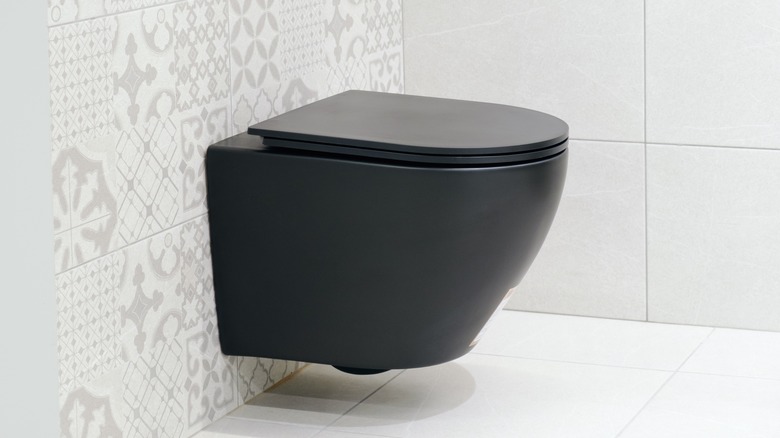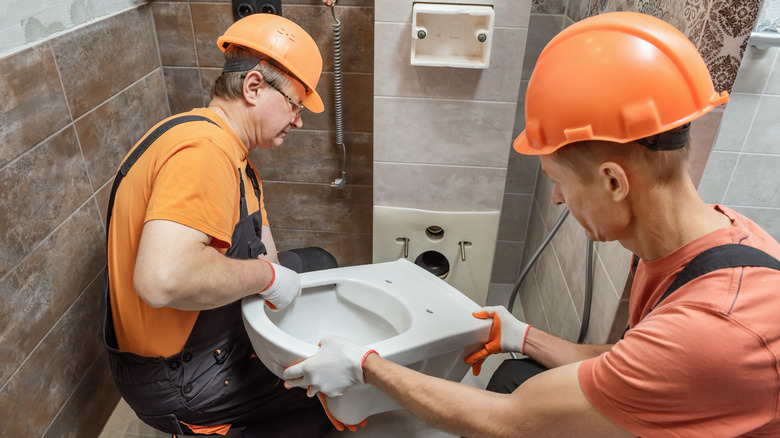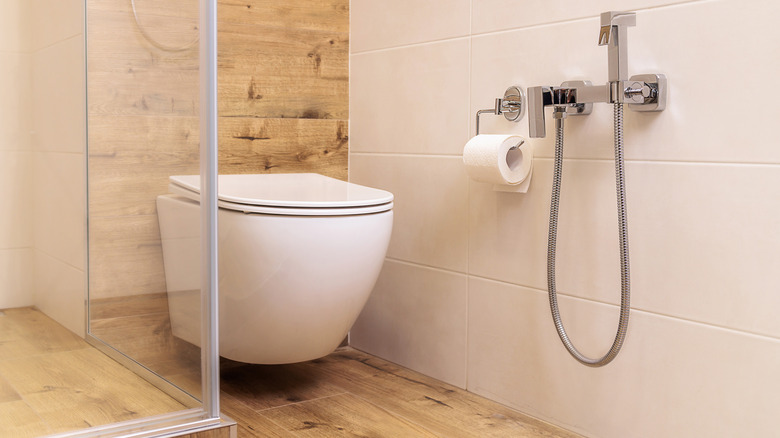Here Are The Disadvantages Of A Floating Toilet
Floating toilets are having a moment. They score over standard floor-mounted toilets with their sleek appearance and ease of cleaning. Moreover, they hide unsightly water pipes and allow you to dictate the toilet's placement and installation height. Considering these pros, it's easy to see the appeal of a wall-hung toilet. However, looking only at the positive aspects of this design means you could be unpleasantly surprised by the cons. So, to ensure you make an informed decision, consider the disadvantages of a floating unit before buying a new toilet for your bathroom.
For starters, wall-mounted toilets cost more than their contemporaries. You won't just have to pay more for the unit but also for its installation. Further, if the brand you go with doesn't sell the in-wall tank and carrier with the toilet, you'll have to buy them separately and make the right choice, or the components won't work together as a unit. And the costs don't end there. A concealed water tank will make repairs and maintenance tricky and expensive when there's no access panel, since you won't be able to lift the lid and troubleshoot the problem. Thus, you'll have to contact a professional to get the problem fixed.
Floating toilet unit and installation costs are high
The cost of installing a new toilet varies considerably, but floating toilets are definitely on the higher end. Fixr estimates a wall-hung toilet installation can cost anywhere between $800 and $2,500. Now, this is a rough estimate and you can expect to pay more based on the unit you choose. While Angi suggests the average unit price for a floating toilet is $700, Fixr recommends that such units are priced from $500 to $2,500. Considering you can get a floor-mounted unit for $100 to $1,000 (granted you don't choose a one-piece), the material costs will have a significant impact on your budget.
Coming to the installation costs, Fixr estimates you might have to spend between $400 and $900. The labor costs are relatively high for these toilets since they require more work than floor-mounted units and demand more time — between four and six hours, compared to one or two hours for a standard pedestal unit. The drywall is cracked opened to install the in-wall carrier and then sealed back up. The plumbing and waste pipes will also have to be re-configured from the floor to the wall. This will take another six to eight hours and you'll have to pay $75 to $150 per hour. Plus, if you're installing this unit in an older house, the studs might require extra work to install the carrier properly so it supports the weight of the toilet. Additionally, the old hole in the floor (from a floor-mounted unit) must be filled.
Floating toilet repairs, additions, and maintenance are cumbersome and expensive
Besides being uber-expensive, floating units don't support a DIY approach to toilet-related problems. If you hide the water tank behind the wall and outfit it with an access panel, you (or a professional) can handle minor issues. However, if there are more serious problems, like concerns with the toilet flapper or float, you might have to remove the drywall again to fix the issues. This won't just be problematic but also expensive, as you'll have to contact a plumber or handyman every time.
Even though wall-hung toilets have a weight limit of 500 to 800 pounds, they must be installed correctly to offer the required support. Despite how well it's installed, you'll need to get the unit adjusted over time. This is because regular usage will put pressure on the mounted unit, causing it to sag away from the wall. Bidet installation is also expensive. You won't have the option to simply shut off the supply of water and swap out your current toilet valve with a two-pronged one. As the plumbing will be inside the wall, getting help from an expert will be necessary.


